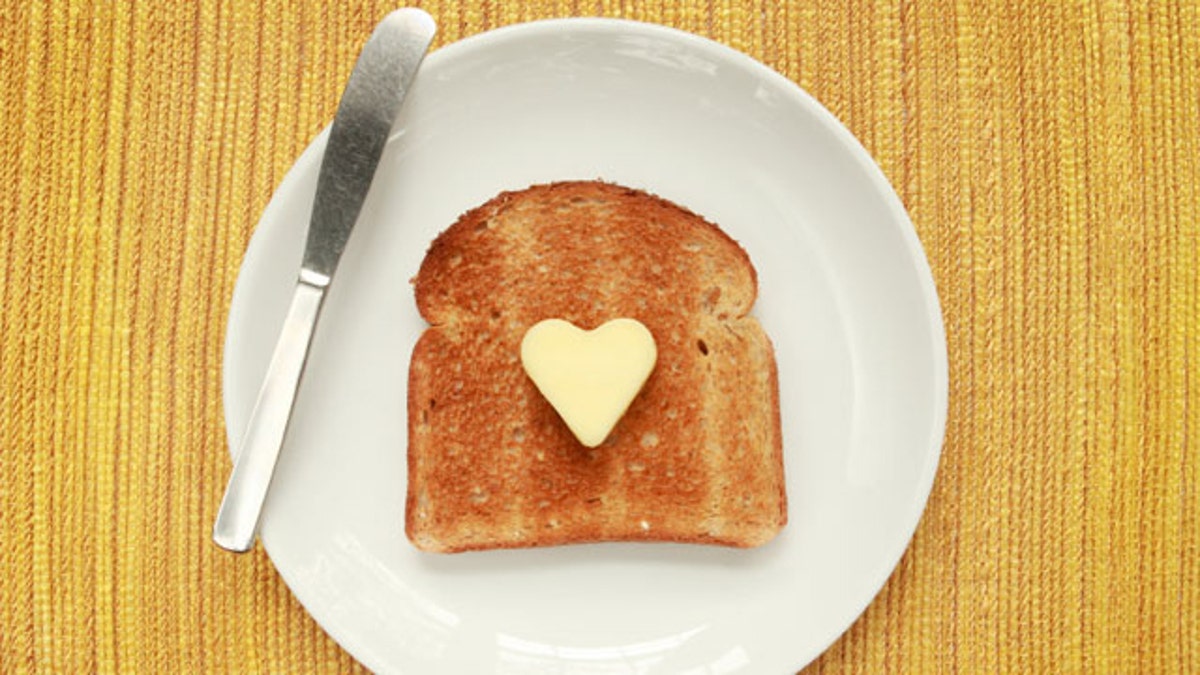
A rundown of the healthiest fats and oils―and those to avoid.
Good Fat: Unsaturated
These oils contain some saturated fat. But they’re considered heart-friendly, as they help lower levels of bad (LDL) cholesterol, and some raise the levels of good (HDL) cholesterol. They include polyunsaturated fats (like omega-3 and omega-6 fatty acids, which help build cell membranes) and monounsaturated fats high in vitamin E, which is lacking in most Americans’ diets.
Canola Oil
(7 percent saturated fat)
Made from: Seeds of the rapeseed plant.
Used in: Salad dressings, some margarines, frying food.
Pros: Good source of omega-3 fatty acids. Has a neutral flavor and a high smoke point.
Con: Has fewer antioxidants than olive oil.
Related: How to Read Food Labels
Sunflower Oil
(About 10 percent saturated fat)
Made from: Sunflower seeds.
Used in: Some margarines; processed snack foods, like cookies and crackers.
Pros: High in unsaturated fat. Flavorless and colorless.
Con: Susceptible to oxidation, so restaurants may use an unhealthy, partially hydrogenated variety.
Corn Oil
(About 13 percent saturated fat)
Made from: The germ of corn.
Used in: Salad dressings, corn chips, some margarines, baked goods, microwave popcorn, general cooking.
Pros: A good source of omega-6 fatty acids. Neutral in flavor. High smoke point. Inexpensive.
Con: Often hydrogenated (which adds unhealthy trans fats) in processed and deep-fried restaurant foods.
Olive Oil
(14 percent saturated fat)
Made from: Olives.
Used in: Salad dressings, some canned tunas, Mediterranean cooking; it’s drizzled on cooked foods for extra flavor.
Pros: Tastes good. High in antioxidants.
Con: The tastiest extra-virgin varieties are expensive.
Related: 18 Easy Low-Calorie Dinner Recipes
Soybean Oil
(15 percent saturated fat)
Made from: Soybeans.
Used in: Salad dressings, mayonnaise, sautéed dishes, processed snack foods (in its partially hydrogenated form).
Pros: A good source of vitamin E. Inexpensive and widely available.
Con: In this country, most soybean oil in prepared foods is hydrogenated (though the bottled form is not).
Peanut Oil
(17 percent saturated fat)
Made from: Peanuts.
Used in: Roasted nuts, high-heat searing and frying.
Pros: Nutty taste. High smoke point.
Con: More expensive than soybean, sunflower, and safflower oils. Potentially allergenic.
Other Sources of Good Fat: Flavorful Specialty Oils
Walnut Oil
(9 percent saturated fat)
This rich-tasting oil is used in salad dressings, sautés, and marinades. It is high in omega-3 and omega-6 fatty acids and contains a small amount of vitamin E.
Downside: Heating can remove some of the oil’s flavor and produce a slight bitterness.
Related: 24 Nutritious (and Tasty) Snacks
Avocado Oil
(11 percent saturated fat)
Pressed from the fruit of the avocado, this oil has a nutty, buttery taste. It works well in salad dressings and for drizzling on vegetables and is also a good choice for frying and sautéing. Has health properties similar to those of olive oil.
Downside: It is expensive and can be hard to find.
Low-Fat Specialty Oils
Grapeseed Oil
(10 percent saturated fat)
This oil (made from the seeds of grapes and also known as grape oil) has a clean, light taste and is often used in salad dressings and homemade mayonnaise. A high smoke point makes grapeseed oil a good choice for sautéing. It is also high in antioxidants and doesn’t spoil easily.
Downside: It’s expensive.
Flaxseed Oil
(10 percent saturated fat)
Made from flaxseed and used in freshly made salad dressings, flaxseed oil has the highest amount of alpha-linolenic acid (an omega-3 fatty acid) of any oil. Flaxseed boosts immunity, can help ease constipation, and contains the phytonutrient lignin, which may lower your risk for some cancers.
Downside: Flaxseed oil spoils quickly. Some research has linked alpha-linolenic acid to prostate cancer. There’s just enough evidence, says Walter Willett, M.D., chair of the department of nutrition at the Harvard School of Public Health, to suggest that flaxseed oil should be consumed in modest amounts. It’s also hard to find.
Bad Fat: Saturated
These fats raise bad cholesterol, so a diet heavy in them may increase your risk of heart disease. Americans get about 11 percent of their daily calories from saturated fats. The American Heart Association recommends no more than 7 percent.
Margarine
(About 18 percent saturated fat, 0 to 30 percent trans fats)
Made from: Vegetable oils.
Used in: Recipes for baked goods that call for stick margarine. Also used as an inexpensive substitute for butter.
Pros: Many tub margarines have been reformulated to contain mostly unsaturated fats, so check the label.
Con: Splatters if heated in a pan. Tastes synthetic.
Solid Shortening
(20 to 30 percent saturated fat, 8 percent trans fat)
Made from: Partially hydrogenated vegetable oils.
Used in: Processed foods, some baked goods, piecrusts.
Pros: “If you want a flaky piecrust, there’s nothing better than solid shortening,” says P.J. Hamel, a test-kitchen baker at King Arthur Flour, in Norwich, Vermont.
Con: High in trans fats.
Lard
(About 40 percent saturated fat)
Made from: Pig fat.
Used in: Fresh or frozen piecrusts and other baked goods; certain cuisines, including American southern, British, Mexican, Norwegian, and Chinese.
Pros: Gives a delicate texture and taste to fried foods and baked goods.
Con: Hard to find in stores.
Palm Oil
(50 percent saturated fat)
Made from: The fruit of the palm tree.
Used in: Processed foods, such as cookies, crackers, and microwave popcorn.
Pros: Nutty flavor. High in antioxidants. Long shelf life.
Con: Very high in saturated fat.
Butter
(About 60 percent saturated fat)
Made from: Cream or milk.
Used in: High-quality baked goods and desserts, sauces; also used as a spread.
Pros: Adds outstanding flavor, texture, and shape to foods.
Con: Contains myristic acid, thought to be the most potent LDL-raising fat.
Coconut Oil
(About 87 percent saturated fat)
Made from: Coconuts.
Used in: Nondairy creamers; Thai, Polynesian, and Indian dishes.
Pros: Resistant to rancidity. Contains lauric acid, a fatty acid that raises good cholesterol.
Con: Has a strong taste.
